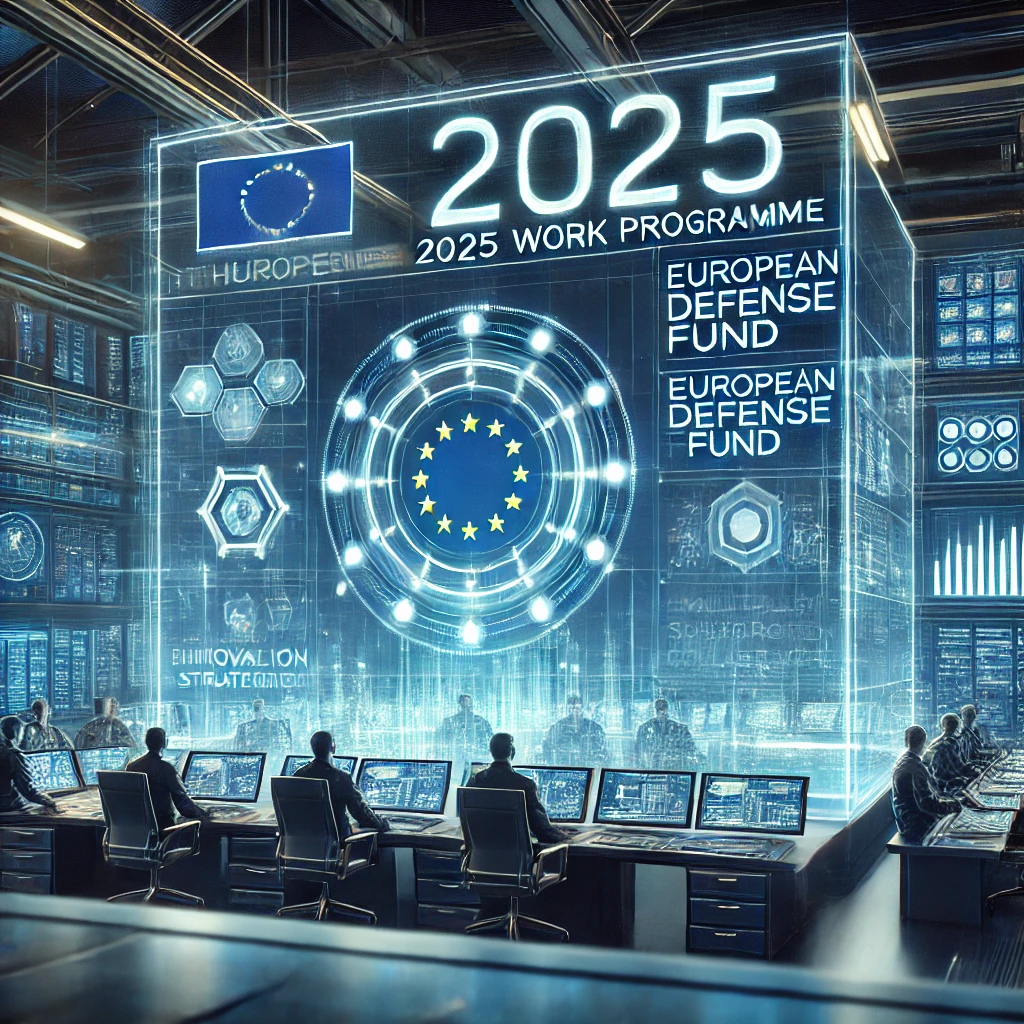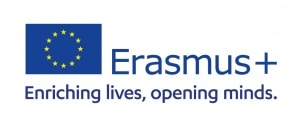Here you can find full report.
The European Commission published on 29 January 2025 the work programme of the European Defence Fund for 2025. This work programme can be of interest to many organization as it is also covering cross-cutting activities such as health (medical), communication, IT, space, cyber, AI, energy or electronics. The overall aim is to bolster the competitiveness, efficiency, and innovation capacity of the European defence technological and industrial base, thereby enhancing the EU’s strategic autonomy amid a complex security environment.
Key Financial Provisions
- Union Contribution:
The maximum Union contribution for 2025 is set at approximately EUR 1.065 billion. This sum is divided between two budget lines:
-
- Capability development: about EUR 695 million
- Defence research: around EUR 370 million.
These funds may also cover interest for late payments.
- Flexibility and Management:
A flexibility clause permits cumulative changes of up to 20% of the maximum contribution without being considered a substantial change. Most actions will be implemented through indirect management (where designated entities or persons are entrusted with the management of projects), ensuring that the financial interests of the Union are protected through prior assessments and supervisory measures.
- Blending Operations:
An amount of EUR 20 million is allocated for blending operations, which will be managed indirectly by the European Investment Fund to support complementary financial instruments.
- Amendments for Third-Party Support:
The document amends earlier decisions, so that, in addition to entities in the EU and EDF Associated Countries, Ukrainian entities can now receive financial support. This change reflects an intent to leverage Ukraine’s battlefield experience to enhance the competitiveness and innovation within the European defence sector.
Structure of the Work Programme
The Work Programme is organized around a comprehensive set of calls for proposals that cover 16 thematic categories of action. These thematic areas are aligned with the objectives of the EDF Regulation and the EU Defence Industry Strategy (EDIS). Key categories include:
1. Defence Medical Response, CBRN, Biotech, and Human Factors (MCBRN):
Actions under this category focus on developing advanced defence medical countermeasures, including research and development activities within a Framework Partnership Agreement to support the EU defence medical countermeasures Alliance.
2. Information Superiority (C4ISR):
This area targets the development of critical command, control, communication, computer, intelligence, surveillance, and reconnaissance (C4ISR) capabilities. For example, one call topic is devoted to developing a next-generation Multifunctional Information Distribution System (MIDS) for enhanced operational interoperability.
3. Advanced Passive and Active Sensors (SENS):
Two key topics here include the development of a multi-band 4D radar system for robust detection across multiple domains and improving technologies for infrared detectors to enhance situational awareness.
4. Cyber:
Recognizing cyberspace as a critical and contested domain, the programme includes topics aimed at enhancing cyber defence capabilities. These range from improving risk assessment and resilience for autonomous military vehicles to strengthening cyber defence operations and ensuring interoperability with NATO and national systems.
5. Space:
With an increasing reliance on space-based capabilities for defence applications, the Work Programme covers topics such as on-orbit operations and services (to support satellite maintenance and resilience) and the development of space-based ISR (intelligence, surveillance, and reconnaissance) constellations.
6. Digital Transformation (DIGIT):
This section focuses on leveraging digital technologies, including artificial intelligence. Topics here include challenges to develop privacy-preserving human-AI dialogue systems that can handle classified information in defence settings and establishing common testing environments to evaluate such systems.
7. Energy Resilience and Environmental Transition (ENERENV):
The EDF aims to align defence activities with broader EU climate objectives. Topics under this category address the development of next-generation propulsion systems for rotorcrafts, naval hybrid propulsion and power systems, and advanced aircraft propulsion and energy management systems.
8. Materials and Components (MATCOMP):
To enhance supply chain resilience, this area includes research on advanced materials such as “chiplets” – modular integrated circuit blocks that can be combined to form complex systems, thereby reducing costs and increasing performance in defence electronics.
9. Air Combat and Ground Combat:
In air combat, topics include the development of collaborative air combat systems and enhanced pilot environments to support networked operations. For ground combat, the Work Programme addresses counter-battery technologies, development of future modular multifunctional land platforms, collaborative combat systems, and drone-based affordable mass munitions.
10. Force Protection and Mobility (PROTMOB):
This category includes calls for developing full-scale demonstrators for next-generation soldier systems, aimed at enhancing individual protection and operational effectiveness in multi-domain environments.
Other categories such as naval combat, underwater warfare, simulation and training, and disruptive technologies are also detailed, each with specific calls for proposals, indicative budgets, and targeted types of activities ranging from research to development.
Types of Activities and Funding Modalities
The document distinguishes between different types of actions:
- Research Actions: Focused on generating new knowledge, feasibility studies, and early-stage design.
- Development Actions: Targeted at system prototyping, testing, and the industrialisation of prototypes.
- Calls for Proposals: Six major calls are outlined, each with specific modalities (actual cost grants vs. lump sum grants), indicative budgets, and targeted outcomes.
Additionally, there are provisions for non-thematic calls aimed specifically at SMEs and research organisations, as well as actions supporting coordination, outreach, and capacity-building (such as business coaching and accelerator programmes).
Legal and Policy Framework
The document emphasizes that the EDF is a key instrument in achieving the broader objectives of European strategic autonomy, defence industrial competitiveness, and enhanced security amid an evolving geopolitical landscape.
The EDF Work Programme 2025 document lays out a detailed financial and operational roadmap for advancing European defence capabilities over the coming year. By incorporating both traditional defence domains and emerging areas such as cyber, space, digital transformation, and green technologies, the Work Programme seeks to foster a robust, innovative, and competitive European defence industrial base while extending support to new actors, including Ukrainian entities, to enhance overall collective security.




